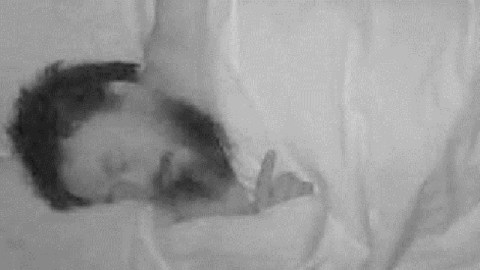A Tale of Two Artists’ Webcams

It was the best of webcams, it was the worst of webcams, it was “must see” TV, it was “must flee” TV—in short, this has been an interesting week in the world of famous artists’ webcams. To mark the first anniversary of his being seized and detained by the Chinese government, Ai Weiwei set up a series of webcams in his home, only to have those same authorities shut off the feed one day later. To mark the opening of his first major museum retrospective at the Tate Modern, Damien Hirst launched his own studio webcam to show the artist at work, only neither he nor his work appears on screen. The tale of these two artists’ webcams neatly sums up the state of art today.
In the city of Beijing, Ai Weiwei is both a hero and a nonperson, depending on how you view his art and his criticism of the Chinese government. On April 3, 2011, Chinese officials seized Ai as he attempted to board a plane to Hong Kong. Charged with “economic crimes,” Ai disappeared for weeks. Officials finally allowed Ai’s wife to see him on May 16th at a mysterious, undisclosed location. The government released Ai on June 22nd, but handed him a huge bill for unpaid taxes on the way out. Supporters helped Ai pay his bill by folding paper money into paper airplanes and gliding them into his garden. The government continued its harassment in November 2011 by charging Ai with pornography based on a photograph of the artist taken with four naked women.
On April 3, 2012, after a full year of threats, Ai decided to give a “gift” to his fans and supporters worldwide who worried for his safety. Ai placed four webcams throughout his home so that anyone could check in and see him working, thinking, and even sleeping (shown above). With the eyes of the world upon him there in his home in Beijing—the city the Chinese government refuses to let him leave—Ai could document exactly what the government might try to do to him. Unfortunately, that gift lasted a little over a day before the site when dark. Ai claims that the government shut it down, while others claim that Ai shut it down after threats from the government. Based on past performance, I don’t think the Chinese government is shy about restricting the internet to restrict dissent. Based on past performance, too, I don’t see Ai giving in easily to threats.
In the city of London, Damien Hirst is both a hero and a fraud, depending on how you view his art and his criticism of the old-fashioned way of making your own art. To coincide with his first major museum retrospective at the Tate Modern, Hirst decided to add a new feature to his already considerable website presence—a webcam showing the artist at work in his studio. Unfortunately, although the webcam shows the making of art, it doesn’t show Hirst himself making the art. Instead, you see Hirst’s workers laboring to enact the ideas that Hirst himself is too busy (usually with self-promotion) to do himself.
While Ai bestowed a gift on his fans with his short-lived webcams, Hirst simply burdened the public with just another thing to avoid, if avoiding all things Hirst is your cup of tea. It seems that Hirst’s grand plan for canonization with the Tate Modern show is failing, as the early reviews are in, and they’re almost uniformly bad. Even the least negatively slanted commentary wishes Hirst portrayed himself as less of a fraud and more of an artist in the exhibition. While Ai fears a personal disappearance beyond his control, Hirst might actually be experiencing the beginning of a personal disappearance beyond his control. Sale prices of Hirst’s works, which have always rankled critics as they precipitously rose, seem to have hit their apex and begun what might eventually be as quick a fall. One British critic even warns owners of works bearing Hirst’s name to sell now, before the cataclysmic crash comes.
I imagine the curious checking in on Ai’s webcam site hoping for a glimpse of the man himself and coming back later, hoping for the best. I also imagine the curious checking in on Hirst’s webcam site hoping for a glimpse of the man himself and disappointedly vowing never to return, hoping for the worst for the biggest name and the biggest problem in the art world today. By being the meretricious face of modern art, Hirst quite simply is killing the visual arts as a vital part of contemporary, mainstream life. By being the missing face of modern art, however, Ai Weiwei reminds us that art (more obviously in some places on Earth than others) can be a life or death proposition.
[All apologies to Charles Dickens.]





